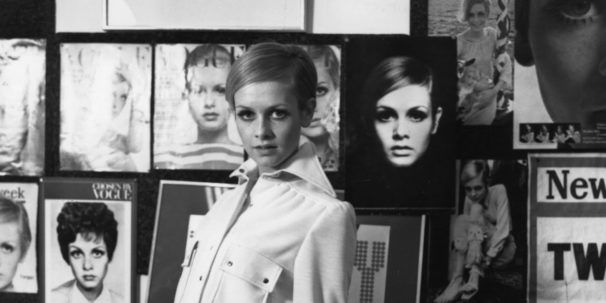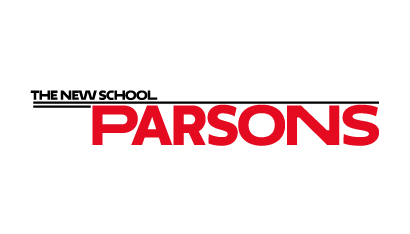A history of fashion in the UK: Explore British fashion design
In this article, we discuss the study of fashion history, why London is one of the fashion capitals of the world, and how UK fashion has evolved over the decades.

By Rhiannon Wardle
Fashion is a crucial and culturally important part of self-expression and can also be used as a tool of influence. As a result, fashion holds a lot of power – some of the world’s biggest fashion icons like David Bowie, Billy Porter and Princess Diana have worn outfits that held a lot of cultural significance and influenced thousands of people.
British fashion, in particular, has been a big influence on the global fashion world for many years, so today we’re exploring how fashion in the UK has changed since 1800. In this article, we’ll discuss why you might want to study fashion history, why London is a global fashion capital and some of the greatest British designers. Finally, we’ll dive into British fashion over the decades.
Why study the history of fashion?
If you’re interested in fashion, then learning about fashion history is indispensable. This is because fashion is constantly changing and repeating itself, and designers are able to take infinite inspiration from old collections, historic dress and even art and architecture.
Studying fashion techniques, materials, shapes, and designs from the past can help us to understand cultural moments, predict future trends, and be creative with new designs. So if you want to work in the fashion industry, learning about the history of fashion is crucial.
Even if you don’t, but you’re a lover of fashion, you might find that you’re able to develop your personal style after learning about iconic fashion trends and moments.
Why is London one of the fashion capitals of the world?
As we’ve previously mentioned, London is pretty big in the fashion world. But how did it become a fashion capital, and how is the London fashion scene different from other global cities? Well, for starters, London is one of the most multicultural, creative and open-minded cities in the world.
This has a big impact on the fashion industry because it enables designers to be more creative and innovative, and it fosters a level of openness that encourages diversity and embraces cultural differences.
Dylan Jones, Editor-In-Chief of GQ magazine, claims that “what London has over the other fashion capitals is a genuine sense of eccentricity”. But where does this eccentricity, creativity and diversity in fashion come from, besides the makeup of London itself?
London fashion schools
One of the biggest reasons why London stands out is because it has some of the best fashion schools in the world.
Central St Martins is the university of some of the biggest designers in the world, including Alexander McQueen, John Galliano and Christopher Kane. London College of Fashion has alumni including Jimmy Choo, and Condé Nast College of Fashion and Design has sent their graduates to companies including Moschino, Dior and Vogue.
Shopping in London
Thinking about London from a consumer perspective, the city also has some of the best shopping spots in the world. Oxford Circus is renowned for its bustling high street with every brand imaginable, but you can also find vintage fashion a-plenty on Brick Lane, or designer brands in Chelsea or Liberty’s department store. London’s shopping potential is certainly another reason that the city is firmly on the global fashion map.
London Fashion Week (LFW)
Last, but not least, London Fashion Week (LFW) has cemented London as one of the most influential fashion capitals in the world, alongside New York, Paris and Milan. It was established in 1984 by the British Fashion Council and now takes place twice a year. Having such a widely respected show brings all the big names to London – designers, models and celebrities alike.
Who are the biggest British fashion designers?
So many exciting fashion designers are from the UK, and designers have a pivotal role in fashion history. With that in mind, we thought we’d take the time to briefly look at the influence of three of the biggest British fashion designers of the past few decades.
Alexander McQueen
McQueen is an incredible example of how fashion success doesn’t have to come from starting out wealthy or having celebrity contacts. Growing up in a council flat in London, and leaving school with one O-Level in Art, he may not have seemed like a likely candidate for fashion royalty. However, he was the head designer of Givenchy, created his own menswear line in 2004, and even won British Designer of the Year four times.
Sadly, Alexander McQueen took his own life in 2010, but he continues to be known and appreciated for his anti-establishment attitude, subversive designs and catwalk shows, and impeccable tailoring.
Stella McCartney
She may have had a more typical beginning to the fashion world than McQueen, being the daughter of a celebrity and obtaining a degree from Central St Martins, but Stella McCartney undoubtedly became a British fashion icon in her own right.
Not only is she recognisable for her women’s tailoring and blurring of masculine and feminine, but she also was one of the first big designers to take a stance against using leather, fur, feathers or any other animal products in her clothing. Her pioneering approach to sustainable practices, respect for animals, and blurring of gender binaries have helped to secure her as a British icon.
Vivienne Westwood
A fashion icon since the 1970s, Vivienne Westwood is a self-taught designer who started off selling vintage clothing with her husband, the manager of the punk band The Sex Pistols. After some time, Westwood built a name for herself, designing multiple menswear and womenswear collections each year alongside many other fashion collections.
Westwood’s style is known for being unconventional and outspoken and heavily influenced by punk. She brought fashion accessories such as safety pins and chains into the mainstream, uses political slogans in her clothing, and innovates with traditional fabrics such as tweed, tartan and tulle.
In 2004, the Victoria and Albert (V&A) Museum in London held the largest exhibition ever devoted to a British fashion designer, called “Vivienne Westwood: 34 Years in Fashion”.
-

 The University of Glasgow A History of Royal FashionHistory,Creative Arts & Media
The University of Glasgow A History of Royal FashionHistory,Creative Arts & Media -

 University of Reading Anarchy in the UK: A History of Punk from 1976-78History,Creative Arts & Media
University of Reading Anarchy in the UK: A History of Punk from 1976-78History,Creative Arts & Media
A timeline of British fashion history since 1800
Now it’s time to delve into British fashion over the decades and see how history influences current and future trends. We’ll briefly go over 19th-century fashion before looking at each decade throughout the 20th and 21st centuries in more detail.
Keep in mind that British fashion was influential and culturally important well before this time. Fashion changed throughout the centuries, spanning medieval England, Tudor times and the Victorian era. British Royal fashion played a large part in inspiring wider trends, something we can still recognise in recent times with Princess Diana, Kate Middleton and Meghan Markle becoming fashion icons.
However, to explore Britain’s entire history of fashion would require a very long article, so today we’ll be focusing on more recent times, with help from the V&A Museum’s learning materials.
19th-century fashion
The end of the 18th century saw the modernisation of clothing for men and women. Men still wore tailcoats but they were shortened, and women still wore corsets and gowns, but with a slightly more natural silhouette.
The clothing industry in London expanded, as materials and dyes came forth on boats from corners of the British empire. This, along with the popularisation of the home sewing machine, allowed for more freedom and bolder clothing designs in the post-Victorian period.
1900s fashion
Once we get to the 1900s, we can see that the corset is still fashionable for women. In particular, an S-bend corset that pushed the hips back and chest forward was popular, and could often be seen alongside frilly blouses with lace or ribbon embellishments. Separates were also becoming common as an alternative to dresses.
Men generally wore three-piece suits with hats, so we can see that British fashion during this time was still rather formal, without much room for self-expression.
1910s fashion
In the 1910s was the outbreak of World War One, and with that, everything changed for British fashion. People had to be more economically restrained, and this led to the simplification of clothing into something cheaper and more practical. This also meant that the line between men’s and women’s fashion became more blurred.
The role of women experienced a huge upheaval, and they started to work on farms and in factories as part of the war effort. This meant that their clothing became more military-inspired and practical to suit the work they were doing, and dresses also became simpler and looser.
1920s fashion
One of the most famous decades of British fashion, the roaring twenties began with everyone feeling a sense of prosperity and freedom after the end of the war. Fashion became inspired by art deco architecture and golden features, and influence was taken from ancient civilisations – an enthrallment with ancient Egypt followed the discovery of King Tut’s tomb in 1922.
Gone was the military dress of the previous decade, but some of the practical features of clothing stayed, with men and women wanting to feel comfortable even while they partied. Women often wore flapper dresses with dropped waistlines and ornate decorations, and men started to play with more colourful suits and bow ties.
1930s fashion
While the glamour of the 1920s stayed throughout the 30s, the most popular women’s silhouette changed from the more androgynous, shapeless flapper dress to a more silky, form-fitting evening gown, often with a low back. Decorative hats and collars were also popular at this time.
For men, the three-piece suit dropped even more in popularity, being reserved only for formal events. Casual clothes such as knitwear and open-necked tops became more popular for daywear.
1940s fashion
With the Second World War came the reintroduction of more practical, military-inspired clothing. The UK government even issued a utility scheme that listed a set of regulations on clothing to reduce the amount of fabric used. Both men and women wore outfits that mimicked utility uniforms, with features such as padded shoulders and lots of buttons.
To try and make utility clothing more appealing, bright colours were introduced by designers, and the use of cheaper fabrics such as rayon began to rise.
1950s fashion
In the 50s, the leading style for women was a dress with a cinched waist and a very full skirt, made famous by Christian Dior. As time went on, pencil skirts became more common, and so dresses became more form-fitting.
Not too surprisingly, the suit was still the centrepiece of men’s fashion, but a new kind of “Teddy Boy” style became fashionable as a result of working-class rebels who were inspired by Hollywood stars like James Dean. This normally consisted of narrower trousers than usual, velvet blazers and brocade waistcoats.
1960s fashion
Fashion changed dramatically in the 60s, with both womenswear and menswear becoming more casual than ever before. New clothing items like the miniskirt were created with young consumers in mind by designers like Mary Quant – this was a result of “Swinging London”, a phenomenon in the 60s based on youth culture, music and fashion.
Playful colours and materials became more popular, with designers using fabrics like polyester, acrylic and PVC. Regarding menswear, things had never looked more different. Clothes were more playful and colourful, trousers were wider, and shirts were printed. There was also more of a blending between men and women’s fashion.
-

 University of Leeds Innovation: the Fashion IndustryCreative Arts & Media,Business & Management
University of Leeds Innovation: the Fashion IndustryCreative Arts & Media,Business & Management -

 Parsons School of Design Your Role in Sustainable Fashion: Sustainable Practices Across the Fashion EcosystemCreative Arts & Media,Nature & Environment
Parsons School of Design Your Role in Sustainable Fashion: Sustainable Practices Across the Fashion EcosystemCreative Arts & Media,Nature & Environment
1970s fashion
The 70s was a highly playful and explorative decade for fashion in the UK, with numerous styles being adopted. This included a hippie or boho style with tie dye, bell bottoms, prairie dresses and crochet becoming popular, all of which were part of a movement away from mainstream fashion and politics.
The punk movement was also a rejection of mainstream society but with a rather different style; instead of crochet, punks wore tartan, leather and chains. Disco also became popular in the 70s, and this meant that sequins, hot pants and miniskirts were all the rage.
Menswear kept getting more bold and colourful, with more printed shirts and blazers becoming mainstream alongside increasingly slim-fitting trousers. The 70s, in particular, created a bunch of male British style icons, from Mick Jagger to David Bowie.
1980s fashion
Called by some “the time that fashion forgot”, the 80s were certainly an interesting time for British fashion, with many supposed fashion rules being ignored or broken. Understated was not a theme of the 80s, with some of the most popular trends consisting of shoulder pads, power suits, and bright, lycra sportswear.
Denim also became more popular than ever in this decade, with denim jackets and skirts becoming common alongside classic jeans. Similarly to women, menswear consisted of a lot of power dressing and sportswear, including tracksuits and windbreakers.
1990s fashion
In the 90s, fashion became more casual than ever, with both men and women favouring jeans and oversized clothing. Sportswear continued to inspire fashion, with items like biker shorts and big sweatshirts being a popular trend for women. There was also a surge in the popularity of vintage and second-hand clothing, often inspired by grunge.
Men were also increasingly inspired by grunge movements and bands like Nirvana, with flannel shirts, jeans and Converse shoes being common.
2000s fashion
This was the time that fast fashion started to become pervasive in the UK and other Western countries. A lot of clothes started to be inspired by celebrity culture, and they were made as cheaply and quickly as possible. Y2K trends such as mesh tops, wide-leg trousers, and bedazzled t-shirts were popularised, and we’re currently seeing a resurgence of these styles.
In the late noughties, there was even more fashion experimentation. Some trends were inspired by the 80s, such as neon and geometric patterns, but we also saw a rise in alternative trends such as emo style and scene. Some of the most popular noughties trends in the UK include skinny jeans, ugg boots, and chunky belts.
2010’s fashion
This decade is when things started to change, and the fashion world has continued to see a total upheaval in how fashion is worn, designed and marketed ever since. With the rise of social media, influencer culture, and eventually sustainability and eco-friendly fashion, we’ve seen significant changes throughout the industry.
There are still some notable trends of this decade worth mentioning, however. From festival style with fringing and flower crowns, to millennial pink everything, to the rise of the trainer, fashion has constantly been on the move, and we continue to see trends from previous decades being recycled.
British fashion today
The movement towards sustainability, minimising waste, and wearing good quality clothing has continued since the end of the 2010s. However, the fast fashion empire has also continued to rise, so we’re now seeing the tension between these two approaches to fashion into the 2020s.
We can only hope that the UK continues to be creative and innovative in their fashion designs while thinking about the cost of fashion to the planet, fellow creatures and future generations. You can read more about sustainability in the fashion industry in our previous blog post.
Hopefully, this article has inspired you to learn even more about British fashion history and perhaps lent you some inspiration for your own designs.
-

 Condé Nast College The Future of FashionCreative Arts & Media,Business & Management
Condé Nast College The Future of FashionCreative Arts & Media,Business & Management -

 Condé Nast College Ethics and Diversity in FashionCreative Arts & Media,Business & Management
Condé Nast College Ethics and Diversity in FashionCreative Arts & Media,Business & Management




